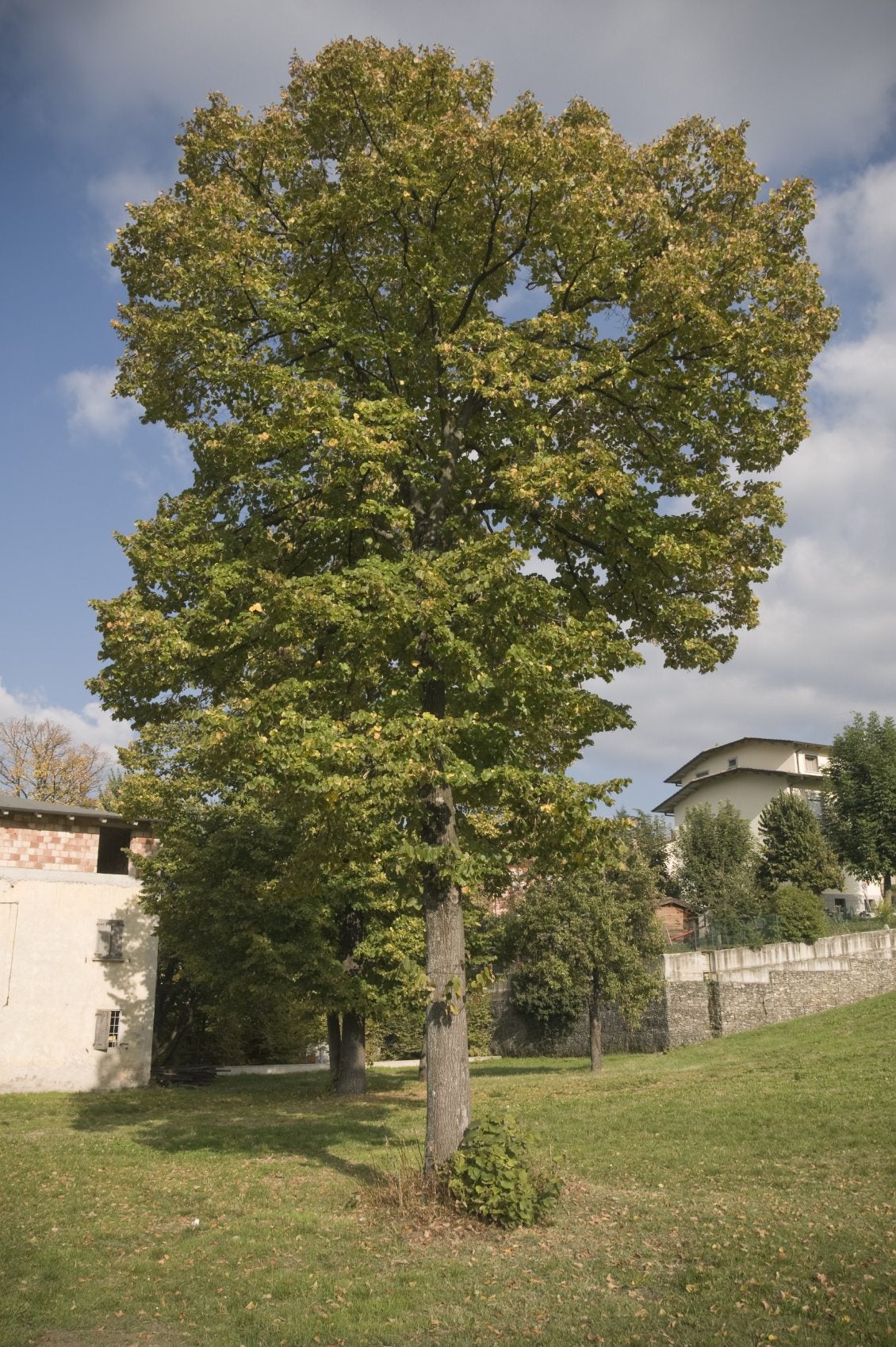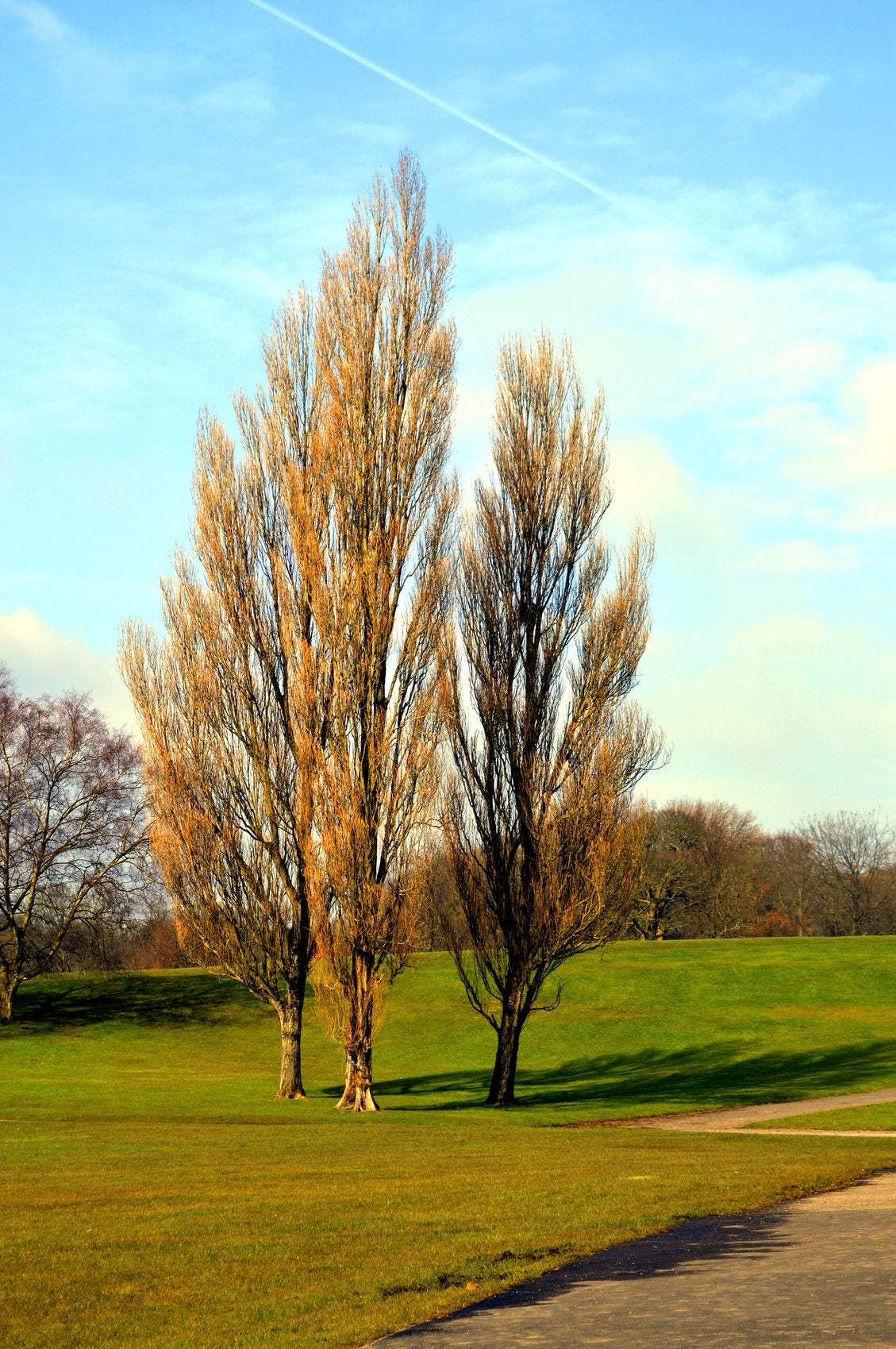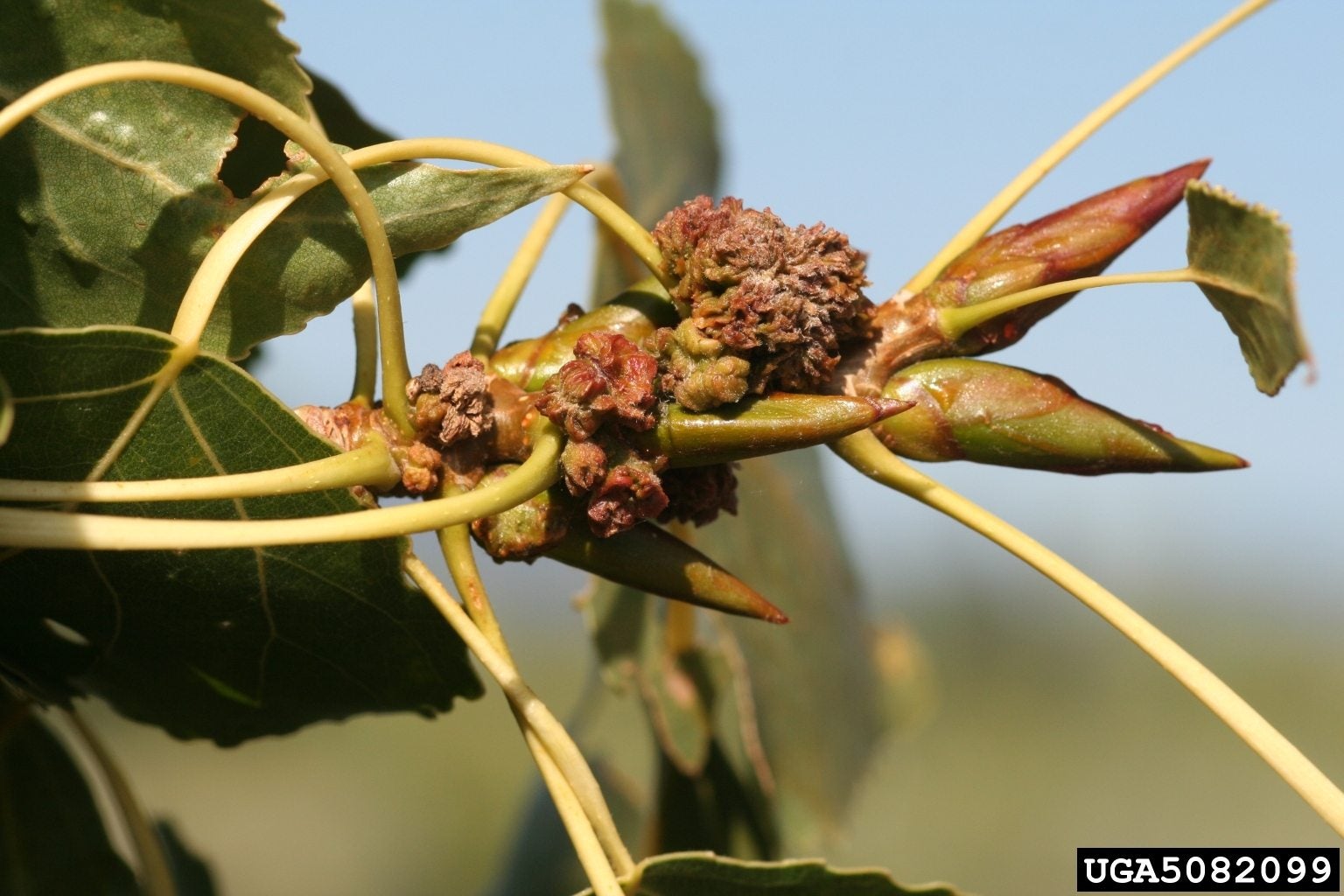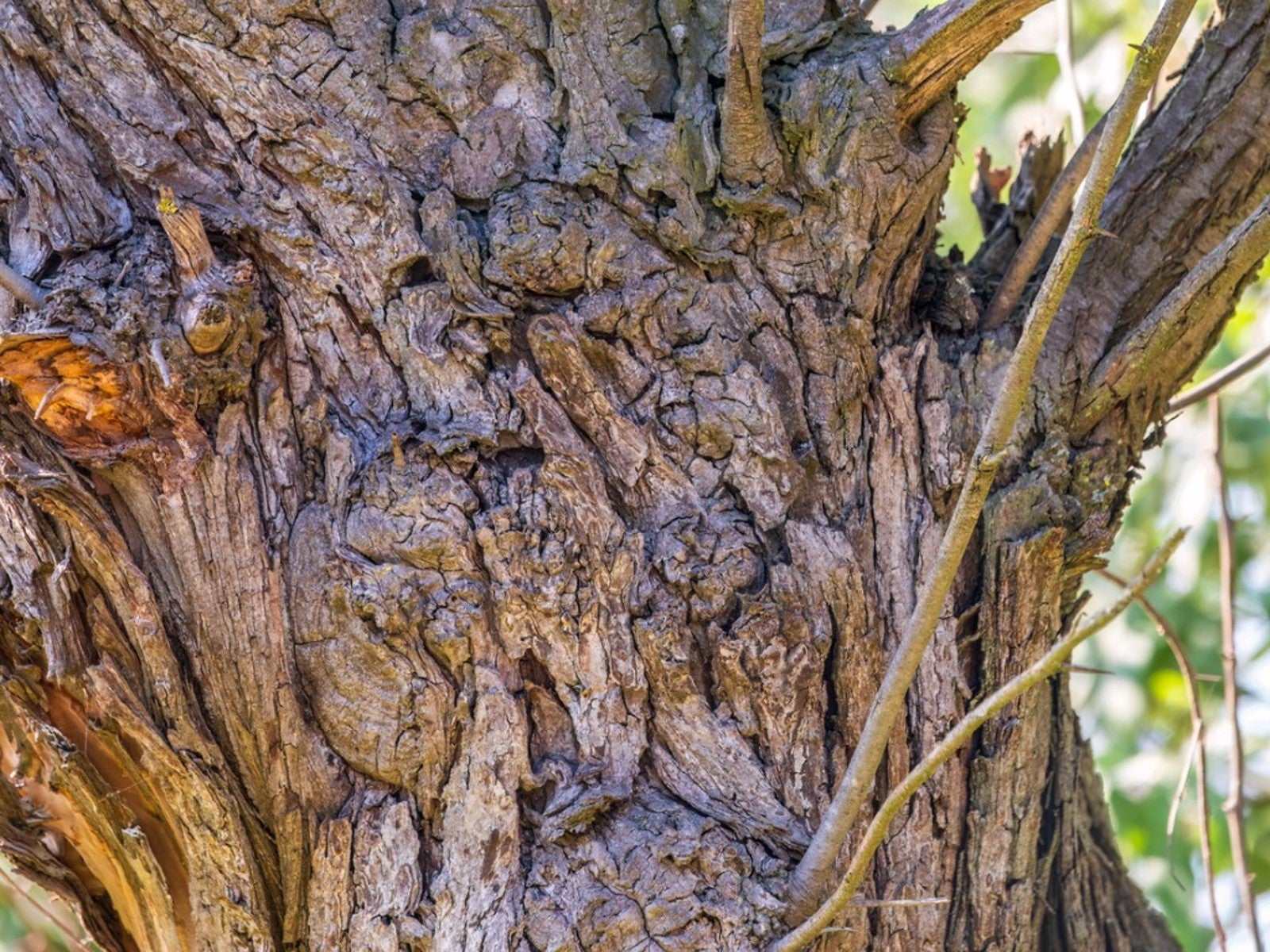Growing Poplar Trees: Information And Tips For Planting Hybrid Poplar Trees


Homeowners love growing poplar trees (Populus spp.) because these American natives shoot up fast, bringing shade and beauty into backyards. There are some 35 species of poplar and, since they cross-pollinate, an infinite number of hybrids. Are poplar trees good or bad as shade trees? Read on to learn the factors that you must consider before growing poplar trees.
Poplar Tree Facts
Poplars can grow very tall and anchor their trunks with powerful roots. These roots might cause problems for homeowners or gardeners who are not familiar with basic poplar tree facts. For instance, planting hybrid poplar trees near houses is not recommended. Poplar trees thrive in warm weather and moist to wet soil. They grow most prolifically in the southern states where these conditions are met. Although poplar varieties range in height and breadth, most share some traits that make them easy to recognize. For example, you can often distinguish a poplar by its leaves that are often heart-shaped and rimmed with tiny teeth. Brilliant green in summer, they glow gold in autumn. Every poplar tree bears both male and female flowers, and in springtime, before the leaves open, you can see hanging clusters of yellow blossoms. The fruits also appear before the poplars leaf. They are small capsules that contain the seeds. You are most likely to see four poplar varieties in the United States: white, eastern, Lombardy, and balsam poplar. The first two are massive trees, growing to over 100 feet (31 m.) tall. Lombardy poplar grows in a pyramid shape, while balsam poplar is found in swampland in the northern half of the country.
Poplar Tree Care
Whether you are planting hybrid poplar trees or one of the popular varieties, you’ll find that poplar tree care is easy in the proper location. Poplars need fertile soil, acidic or neutral, as well as direct sun and sufficient water to keep their roots moist. One of the most important poplar tree facts is the sheer size of the tree. It rises to between 50 and 165 feet (15-50 m.) high with a trunk diameter of up to 8 feet (2 m.). You must be sure that your tree will have sufficient room to grow to its full size.
Are Poplar Trees Good or Bad?
Poplars are wonderful backyard trees, good for specimen planting as well as wind-rows. However, like every species, they have disadvantages. If you’ve heard stories about poplar roots crumbling house foundations, you already know a major issue with poplars. To hold up those huge trunks, poplars have powerful roots that can raise a sidewalk or disrupt a sewer line. Keep this in mind when selecting a planting location. The other downside of poplars is that they don’t live long. Even with the best poplar tree care, specimens die in about 50 years and you’ll have to plant again.
Gardening tips, videos, info and more delivered right to your inbox!
Sign up for the Gardening Know How newsletter today and receive a free copy of our e-book "How to Grow Delicious Tomatoes".

Teo Spengler is a master gardener and a docent at the San Francisco Botanical Garden, where she hosts public tours. She has studied horticulture and written about nature, trees, plants, and gardening for more than two decades. Her extended family includes some 30 houseplants and hundreds of outdoor plants, including 250 trees, which are her main passion. Spengler currently splits her life between San Francisco and the French Basque Country, though she was raised in Alaska, giving her experience of gardening in a range of climates.
-
 Try The Trend – Turn Any Bed Into A Keyhole Garden With This Clever In-Ground Composter
Try The Trend – Turn Any Bed Into A Keyhole Garden With This Clever In-Ground ComposterKeyhole gardening is an efficient and sustainable practice that saves space. Get started on this DIY project quickly and easily with an in-ground composter.
By Bonnie L. Grant
-
 4 Superfast Composting Methods: Turn Waste Into Garden Gold In 30 Days Or Less
4 Superfast Composting Methods: Turn Waste Into Garden Gold In 30 Days Or LessTry the fastest composting methods to turbocharge your pile and transform kitchen scraps and garden waste into finished compost in just a few weeks.
By Mary Ellen Ellis
-
 Lombardy Poplar Facts – Guide To Lombardy Poplar Care In The Landscape
Lombardy Poplar Facts – Guide To Lombardy Poplar Care In The LandscapeIf you read up on Lombardy poplar tree facts, you'll find that these trees offer advantages but also many disadvantages. For more information about Lombardy poplars in landscapes, this article will help.
By Teo Spengler
-
 Bud Gall Mite Insects On Poplar Trees – Tips On Poplar Bud Gall Mite Treatment
Bud Gall Mite Insects On Poplar Trees – Tips On Poplar Bud Gall Mite TreatmentMicroscopic though they are, bud gall mites can do significant esthetic damage to trees like poplars, cottonwoods and aspens. If you have these poplar tree pests, you?ll want to read up on procedures for getting rid of eriophyid mites on poplars. This article will help.
By Teo Spengler
-
 Poplar Tree Cankers – Learn About Canker Disease In Poplar Trees
Poplar Tree Cankers – Learn About Canker Disease In Poplar TreesCankers are physical deformities that may indicate a serious poplar tree disease. They are often the first in a series of symptoms that can end in the death of the tree. Learn about canker disease in poplar trees in this article.
By Jackie Carroll